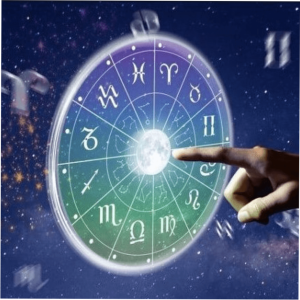Słońca i Księżyca w określonym momencie. Najczęściej odnosi się do daty urodzenia danej osoby, ale istnieją też horoskopy dzienne, tygodniowe czy roczne. W wielu kulturach horoskopy stanowią źródło refleksji nad sobą i otaczającym światem.
Krótka Historia Astrologii
Astrologia ma swoje korzenie w starożytnym Babilonie i Egipcie. Z czasem została rozwinięta przez Greków i Rzymian. W średniowieczu horoskopy cieszyły się dużym zainteresowaniem, a astrologowie często doradzali królom i władcom. Dziś horoskopy są powszechnie dostępne – w gazetach, aplikacjach, stronach internetowych czy mediach społecznościowych.
Znaki Zodiaku
W astrologii zachodniej istnieje 12 znaków zodiaku, które przypisuje się datom urodzenia:
- Baran
- Byk
- Bliźnięta
- Rak
- Lew
- Panna
- Waga
- Skorpion
- Strzelec
- Koziorożec
- Wodnik
- Ryby
Każdy znak jest powiązany z określonymi cechami charakteru, sposobem reagowania oraz postrzeganiem świata.
Rodzaje Horoskopów
Astrologia oferuje różne formy horoskopów:
- Horoskop urodzeniowy (natalny) – tworzony na podstawie dokładnej daty, godziny i miejsca urodzenia.
- Horoskop dzienny – krótka prognoza na dany dzień.
- Horoskop partnerski – analiza zgodności między dwoma znakami.
- Horoskop roczny/miesięczny/tygodniowy – ogólny przegląd tendencji w danym okresie.
- Horoskop księżycowy – oparty na cyklach Księżyca i jego wpływie na emocje.
Czy Horoskopy Są Naukowe?
Astrologia nie jest uznawana za naukę w sensie akademickim. Jednak dla wielu osób horoskopy stanowią formę duchowej lub psychologicznej refleksji. Działają jako narzędzie do zastanowienia się nad sobą i otaczającym światem. Mogą inspirować do przemyśleń lub być źródłem codziennej motywacji.
Dlaczego Ludzie Wciąż Wierzą w Horoskopy?
Powodów jest wiele. Dla niektórych to tradycja, dla innych zabawa, a jeszcze dla innych sposób na lepsze zrozumienie siebie i swojego otoczenia. Horoskopy często odwołują się do uniwersalnych emocji i sytuacji, co sprawia, że są łatwe do zinterpretowania i bliskie wielu ludziom.
Podsumowanie
Horoskopy od wieków towarzyszą ludziom jako forma interpretacji rzeczywistości. Niezależnie od osobistego podejścia, stanowią ciekawy element kultury, który łączy symbolikę, psychologię i obserwację nieba. Czy traktujemy je poważnie, czy jako rozrywkę – horoskopy pozostają obecne w codziennym życiu wielu osób.
Jeśli chcesz, mogę przygotować wersję rozszerzoną, dodać więcej podsekcji lub przystosować tekst pod konkretną kategorię bloga (np. lifestyle, duchowość, relacje). Chcesz coś dopracować?










